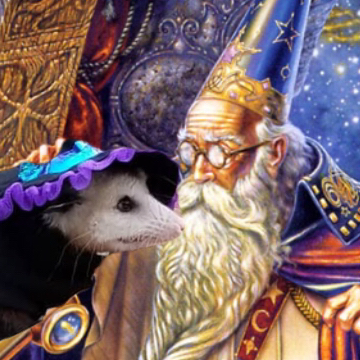So I shot the Bubble Nebula in true-color last year, but I decided to shoot it again this past month in false color. It really helps to show the extended nebulosity, and gives me and excuse to compare my image to Hubble’s. This false color image uses the SHO palette, where the sulfur-ii wavelength is mapped to red, hydrogen-alpha to green, and oxygen-iii is blue. I’m really happy with how the colors turned out on this one. There’s also a number of other nebulae and a star cluster in frame. Captured over 14 nights in Jan/Feb 2024 from a bortle 9 zone (I could only get a couple hours max per night on it.
Places where I host my other images:
-
TPO 6" F/4 Imaging Newtonian
-
Orion Sirius EQ-G
-
ZWO ASI1600MM-Pro
-
Skywatcher Quattro Coma Corrector
-
ZWO EFW 8x1.25"/31mm
-
Astronomik LRGB+CLS Filters- 31mm
-
Astrodon 31mm Ha 5nm, Oiii 3nm, Sii 5nm
-
Agena 50mm Deluxe Straight-Through Guide Scope
-
ZWO ASI-290mc for guiding
-
Moonlite Autofocuser
Acquisition: 37 hours 36 minutes (Camera at -15°C), Camera at unity gain.
-
Ha - 95x360"
-
Oiii - 140x360"
-
Sii - 141x360"
-
Darks- 30
-
Flats- 30 per filter
Capture Software:
- Captured using N.I.N.A. and PHD2 for guiding and dithering.
PixInsight Preprocessing:
-
BatchPreProcessing
-
StarAlignment
-
ImageIntegration per channel
-
DrizzleIntegration (2x, Var β=1.5)
-
Dynamic Crop
-
DynamicBackgroundExtraction
duplicated each image and removed stars via StarXterminator. Ran DBE with a shitload of points to generate background model. model subtracted from original pic using the following PixelMath (math courtesy of /u/jimmythechicken1)
$T * med(model) / model
Narrowband Linear:
-
Blur and NoiseXTerminator
-
Duplicated the images before stretching to be used for separate stars-only processing
-
Slight stretch using HistogramTransformation
-
iHDR 2.0 script to stretch each channel the rest of the way.
Stars Only Processing:
-
PixelMath to combine star images (SHO palette)
-
SpectroPhotometricColorCalibration (narrowband working mode)
-
StarXTerminator to make stars only image form each channel
-
SCNR > invert > SCNR > invert to remove greens and magentas
-
ArcsinhStretch + HT to stretch nonlinear - to be combined later with starless pic
Nonlinear:
-
PixelMath to combine stretched Ha, Oiii, and Sii images into color image (SHO palette)
-
StarXterminator to remove stars
-
HistogramTransformations to tone back the greens and apply a more aggressive stretch to red and blue channels
-
Shitloads of Curve Transformations to adjust lightness, hues, contrast, saturation, etc
-
LRGBCombination with stretched Ha as luminance
-
DeepSNR
-
more curves
-
ColorSaturation to bring up the blues in the bubble
-
LocalHistogramEqualization
-
even more curves
-
MLT for chrominance noise reduction
-
Pixelmath to add in the stretched stars only image from earlier
This basically re-linearizes the two images, adds them together, and then stretches them back to before
mtf(.005,
mtf(.995,Stars)+
mtf(.995,Starless))
-
A round of NoiseXterminator for good measure
-
Resample to 60%
-
Annotation
-
Amazing shot!
Thanks!



